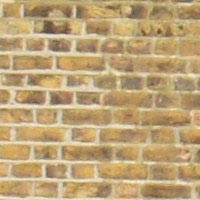Kodak Easyshare V803 Review
Review Date: March 4th 2007
Leave a comment about this Review
|
Image Quality
All of the sample images in this Review were captured using the 8.0 MP (3264 × 2448) JPEG image size option producing a file that is around 2Mb in size.
Noise
The Kodak Easyshare V803 has 6 ISO settings. Here are some 100% crops which show the noise levels for each ISO setting. There is no discernible noise at the slowest settings of ISO 80 and 100, but slight loss of detail is apparent at ISO 200. At ISO 400 blurring is even more evident, and at ISO 800 the image quality has deterioated quite a lot as the camera further blurs detail to try and hide the noise. ISO 1600 should be used only as a last resort. Here are some 100% crops which show the noise levels for each ISO setting.
ISO 80 (100% Crop) |
ISO 100 (100% Crop) |
 |
 |
ISO 200 (100% Crop) |
ISO 400 (100% Crop) |
 |
 |
ISO 800 (100% Crop) |
ISO 1600 (100% Crop) |
 |
 |
Sharpening
Here are two 100% crops which have been Saved as Web - Quality 50 in Photoshop. The right-hand image has had some sharpening applied in Photoshop. The out-of-the camera images at the default setting are soft and benefit from some further sharpening in a program like Adobe Photoshop. Alternatively you can change the in-camera sharpening level if you don't like the default results.
Original
(100% Crop)
|
Sharpened (100% Crop) |
 |
 |
 |
 |
Chromatic Aberrations
The Kodak Easyshare V803 dealt well with chromatic aberrations during the review, with only limited purple fringing present around the edges of objects in certain high-contrast situations. Here is a 100% crop which shows the typical chromatic aberrations that you can expect:
|
Chromatic
Aberrations (100% Crop)
|
Chromatic
Aberrations (100% Crop)
|
 |
 |
Macro
The Kodak Easyshare V803 offers a Macro setting that allows you to focus on a subject that is 5cms away from the camera. The first image shows how close you can get to the subject in Macro mode (in this case a compact flash card). The second image is a 100% crop.
|
Macro Shot |
Macro Shot (100% Crop) |
 |
 |
Flash
The flash settings on the Kodak Easyshare V803 are Auto, Fill, Red-Eye and Off. These shots of a white coloured wall were taken at a distance of 1.5m.
|
Flash Off - Wide Angle (38mm) |
Auto Flash - Wide Angle (38mm) |
 |
 |
|
Flash Off - Telephoto (380mm) |
Auto Flash - Telephoto (380mm) |
 |
 |
And here are some portrait shots. As you can see, both the Fill and Red-Eye options caused a small amount of red-eye.
|
Flash On |
Flash On (100% Crop) |
 |
 |
|
Flash - Red-Eye Reduction |
Flash - Red-Eye Reduction (100% Crop) |
 |
 |
Night Shot
The Kodak Easyshare V803 maximum shutter speed is 8 seconds, which is quite good news if you're interested in night photography. The shot below was taken using a shutter speed of 2 seconds, aperture of f/4.9 at ISO 80. I've included a 100% crop of the image to show what the quality is like.
|
Night Shot |
Night Shot (100% Crop) |
 |
 |
Overall Image Quality
The Kodak Easyshare V803 produced images of average quality during the review period. The 8 megapixel images were soft straight out of the camera at the default sharpening setting and ideally require some further sharpening in an application like Adobe Photoshop, or you can increase the in-camera setting. The Kodak Easyshare V803 dealt well with chromatic aberrations, with limited purple fringing effects appearing only in high contrast situations. Macro performance is average, allowing you to focus as close as 5 cms away from the subject. The built-in flash worked well indoors, with just a hint of red-eye and good exposure. The night photograph was fine, but the maximum shutter speed of 8 seconds doesn't allow you to capture enough light in some situations. The Kodak Easyshare V803 produces noise-free images at ISO 80 and 100, but ISO 200 shows some loss of detail. ISO 400 and 800 exhibit progressively more obvious blurred detail, and the fastest setting of 1600 should only be used in an emergency.
|
![]() PhotographyBLOG
is a member of the DIWA
organisation. Our test results for the Kodak Easyshare V803 have
been submitted to DIWA
for comparison with test results for different samples of
the same camera model supplied by other DIWA
member sites.
PhotographyBLOG
is a member of the DIWA
organisation. Our test results for the Kodak Easyshare V803 have
been submitted to DIWA
for comparison with test results for different samples of
the same camera model supplied by other DIWA
member sites.
